Ladyfinger Cactus (Mammillaria Elongata) Profile
Written by Iris
Dec 07 2021
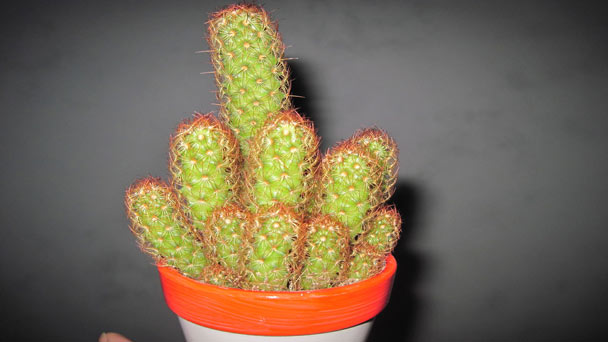
The Lady Finger Cactus, or Mammillaria elongata goes by several different names. It's also sometimes known as Golden Stars, Gold Lace Cactus, or simply Lady Fingers. It is a petite cactus native to central Mexico. This unique cactus gets its names from its elongated stems and golden yellow or brown spines. The Lady Finger Cactus is a favorite among cactus gardeners because of its showy white, yellow, or pink blooms. It's even earned the Royal Horticultural Society's Award of Garden Merit in the United Kingdom.
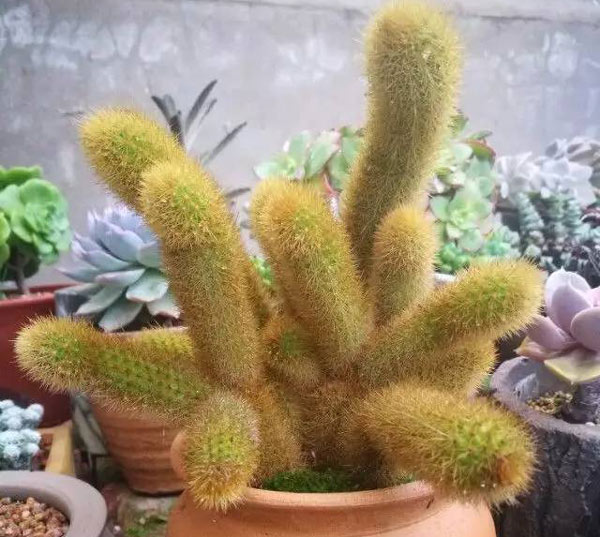
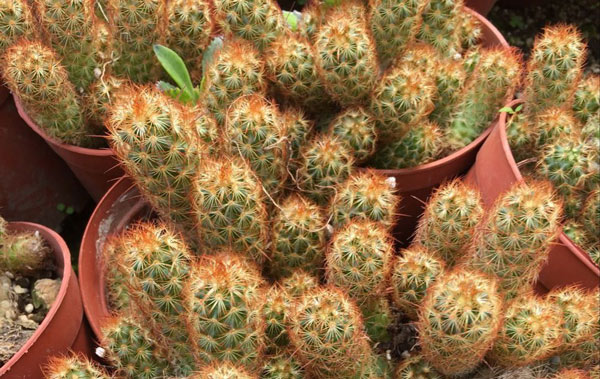
However, if you're looking for a project, you can either collect seeds from your existing Lady Finger Cactus or purchase them on the internet.
Some gardeners recommend soaking the seeds prior to planting, but it's a personal choice. Once you're ready to sow the seeds, be sure to do so in moist, well-draining cactus soil. Keep the soil moist until you begin to see tiny cactus sprouts.
After the seedlings have appeared, you can allow the soil to dry out a bit more to prevent rot. It's not recommended to repot the seedlings until they're big enough to handle safely without accidentally damaging the cacti or their root systems.
To remove a clump for propagation, you will need nitrile dipped gloves, silicone tongs, and a sharp knife.
Using the tongs, gently pull one of the cylindrical stems away from the main cluster. If you are not able to break it off without pulling up the rest of the Lady Finger Cactus plant, use the knife to cut through the stem.
Allow the end of the stem to callous over for several days before placing in well-draining soil.
Most offsets can be separated by gently tugging them away from the mother plant. Just be sure to protect your hands from the spines. You can also cut them away using a sharp, clean knife, but be sure to cut the offset away as close to the mother plant as possible.
Once separated, it's recommended to allow the offsets to dry out for a few days to allow any wounds to callous. This will help prevent infection and give your offsets the best chance of survival.
After they've calloused, your new Lady Fingers can be planted in their new container. They can then be treated just as you did the mother plant.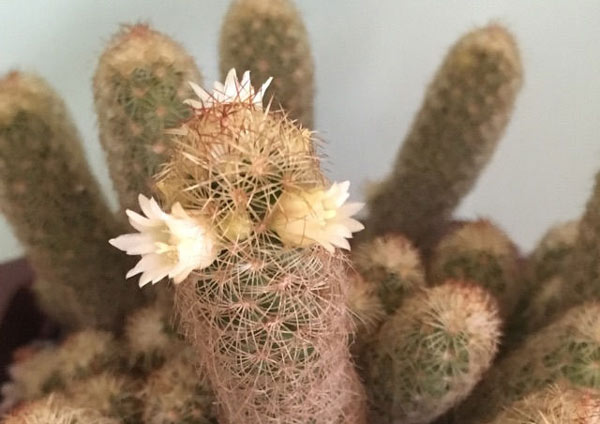
Though cooler temperatures can be tolerated during periods of dormancy, Lady Finger Cacti will not survive freezing temperatures. If you grow your Lady Fingers indoors, temperatures are likely to be more consistent, but try to protect your cacti from sudden temperature changes or drafts if possible.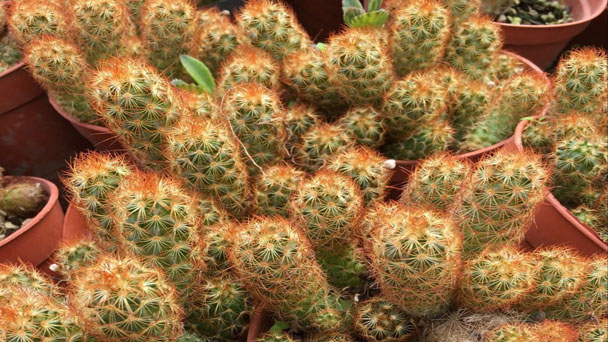
Mammillaria elongata ‘Monstrous Lady Fingers’
The monstrous form of Lady Fingers somewhat resembles the original in shape, but the stems are shorter and nearly spineless. This variety tends to grow more slowly than the original and can be more difficult to bloom. However, when it does bloom, it produces beautiful flesh-colored flowers that are flushed with pink.
Mammillaria elongata ‘Copper King’
The Copper King cultivar is nearly identical to the original variety except for the color of the spines. As the name suggests, they are a deep copper color, rather than the traditional white or gold.
When Copper King blooms in the spring, it produces petite yellow or pink flowers that may or may not be flushed with pink.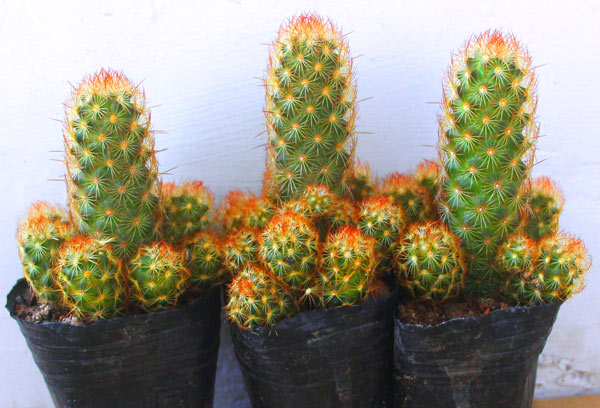
The cold hardy Mediterraneans offer many wonderful companion plants. Among my favorites are the English Lavender (Lavandula) cultivars as they are culturally very compatible with the cacti. As a group, the other hardy ornamental herbs are also excellent. Included here are: Rosmarinus officinalis Alcalde (Alcalde Cold Hardy Rosemary), and Salvia officinalis Minimus (Little-leaf Culinary Sage).
Other favorites include the miniature groundcover Speedwells Veronica bombycina (Woolly Turkish Veronica) and V. oltensis. Other mounding rock garden perennials, such as Achillea ageratifolia (Greek Yarrow), the succulent Sempervivum Commander Hay (Hen and Chicks). Persian Rockcress (Aethionema species), and Atlas Daisy (Anacyclus depressus) fit in nicely as well.
When using either design approach, be sure to choose plants that are not too large. Avoid pairing a large, fast-growing plant with a smaller, slower growing cactus. After a year or two, the more vigorous plant may smother the cactus and kill it.
Lady Finger Cactus PictureLady Finger Cactus InfoLady Finger Cactus Ecological HabitsLady Finger Cactus Distribution How to Grow and Care for Lady Finger CactusHow to Grow Lady Finger CactusHow to Care for Lady Finger CactusVarieties of Lady Finger CactusLady Finger Cactus Common Pests/DiseasesLady Finger Cactus Companion Plants
Lady Finger Cactus Picture

Lady Finger Cactus Info
| ORIGIN | Mexico, Southwest United States, Caribbean, Guatemala, Venezuela |
| SCIENTIFIC NAME | Mammillaria sp. |
| FAMILY | Cactaceae |
| TYPE | Cactus |
| COMMON NAMES | Powder Puff Cactus, Pincushion Cactus, Nipple Cactus, Globe Cactus, Lady Finger Cactus |
| HEIGHT | Up to 5 inches |
| TOXICITY | Non-toxic |
| LIGHT | Bright indirect light |
Lady Finger Cactus Ecological Habits
As the name suggests, Lady Finger Cactus is an elongated cactus with a cylindrical stem. The lady finger cactus stems can reach up to 6 inches in length and average just over an inch in diameter. The stems are covered in white or gold recurved spines. The Lady finger cactus is a clumping cactus that grows in tight clusters. In spring, the Lady Finger Cactus produces petite white, yellow, or pink flowers. The flowers are sometimes solid in color, but they may also flush pink or have pink stripes. The blooms emerge from the axils of the cactus' tubercles.Lady Finger Cactus Distribution
Mammillaria is one of the largest genus of Cacti in the Cactaceae family. Its native range is Mexico, but also some species are found in parts of Central & SW. U.S.A. and also parts of Colombia, Caribbean and in Venezuela. Depending on the species, Lady Finger Cactus can grow either solitary or in clumps, and form a small globular or elongated shape.
How to Grow and Care for Lady Finger Cactus
How to Grow Lady Finger Cactus
- Propagate Lady Finger Cactus With Seeds
However, if you're looking for a project, you can either collect seeds from your existing Lady Finger Cactus or purchase them on the internet.
Some gardeners recommend soaking the seeds prior to planting, but it's a personal choice. Once you're ready to sow the seeds, be sure to do so in moist, well-draining cactus soil. Keep the soil moist until you begin to see tiny cactus sprouts.
After the seedlings have appeared, you can allow the soil to dry out a bit more to prevent rot. It's not recommended to repot the seedlings until they're big enough to handle safely without accidentally damaging the cacti or their root systems.
- Propagate Lady Finger Cactus With Stem Cuttings
To remove a clump for propagation, you will need nitrile dipped gloves, silicone tongs, and a sharp knife.
Using the tongs, gently pull one of the cylindrical stems away from the main cluster. If you are not able to break it off without pulling up the rest of the Lady Finger Cactus plant, use the knife to cut through the stem.
Allow the end of the stem to callous over for several days before placing in well-draining soil.
- Propagate Lady Finger Cactus With Offsets
Most offsets can be separated by gently tugging them away from the mother plant. Just be sure to protect your hands from the spines. You can also cut them away using a sharp, clean knife, but be sure to cut the offset away as close to the mother plant as possible.
Once separated, it's recommended to allow the offsets to dry out for a few days to allow any wounds to callous. This will help prevent infection and give your offsets the best chance of survival.
After they've calloused, your new Lady Fingers can be planted in their new container. They can then be treated just as you did the mother plant.

How to Care for Lady Finger Cactus
- Light
- Soil
- Water
- Temperature and Humidity
Though cooler temperatures can be tolerated during periods of dormancy, Lady Finger Cacti will not survive freezing temperatures. If you grow your Lady Fingers indoors, temperatures are likely to be more consistent, but try to protect your cacti from sudden temperature changes or drafts if possible.
- Fertilizer
- Pruning

Varieties of Lady Finger Cactus
Though rare, there are a few cultivars of the Mammillaria elongata (Ladyfinger Cactus) that can be found by the determined cactus lover. Though they are not as common as the original variety, they are highly sought after by collectors.Mammillaria elongata ‘Monstrous Lady Fingers’
The monstrous form of Lady Fingers somewhat resembles the original in shape, but the stems are shorter and nearly spineless. This variety tends to grow more slowly than the original and can be more difficult to bloom. However, when it does bloom, it produces beautiful flesh-colored flowers that are flushed with pink.
Mammillaria elongata ‘Copper King’
The Copper King cultivar is nearly identical to the original variety except for the color of the spines. As the name suggests, they are a deep copper color, rather than the traditional white or gold.
When Copper King blooms in the spring, it produces petite yellow or pink flowers that may or may not be flushed with pink.

Lady Finger Cactus Common Pests/Diseases
Mammillaria elongata is not frequently attacked by pests being only its main enemy the excess moisture in the substrate.Lady Finger Cactus Companion Plants
Woody shrubs, such as Big Sage (Artemisia tridentata) and Fallugia paradoxa (Apache Plume) blend nicely, particularly with the larger growing cacti.The cold hardy Mediterraneans offer many wonderful companion plants. Among my favorites are the English Lavender (Lavandula) cultivars as they are culturally very compatible with the cacti. As a group, the other hardy ornamental herbs are also excellent. Included here are: Rosmarinus officinalis Alcalde (Alcalde Cold Hardy Rosemary), and Salvia officinalis Minimus (Little-leaf Culinary Sage).
Other favorites include the miniature groundcover Speedwells Veronica bombycina (Woolly Turkish Veronica) and V. oltensis. Other mounding rock garden perennials, such as Achillea ageratifolia (Greek Yarrow), the succulent Sempervivum Commander Hay (Hen and Chicks). Persian Rockcress (Aethionema species), and Atlas Daisy (Anacyclus depressus) fit in nicely as well.
When using either design approach, be sure to choose plants that are not too large. Avoid pairing a large, fast-growing plant with a smaller, slower growing cactus. After a year or two, the more vigorous plant may smother the cactus and kill it.
Latest Updated
- Benefits of Bugleweed - 7 Science-backed Health Benefits
- Bugleweed Dangers & Side Effects - Is It Poisonous?
- How to Plant Evergreen Trees - What You Should Know
- When to Plant Evergreens - Grow Guide for Evergreen Trees
- 12 Wonderful Evergreen Shrubs for Your Garden
- 12 Popular Evergreen Plants with Pictures for Beginners
- When And How To Prune A Lilac Bush Like a Pro
- How to Grow & Care for Lilac Vine (Hardenbergia Violacea)
- Japanese Lilac Tree (Syringa Reticulata) Care & Propagation Guide
- Shumard Oak Pros and Cons - What to Know
Popular Articles
- Winter maintenance of Antirrhinum Majus
- How to Grow Terminalia Mantaly Tree
- How to Grow and Care for Crossostephium Chinense
- How to grow Antirrhinum Majus in spring
- Peristeria Elata (Dove Orchid) Profile: Info & Care Guide
- Underwatered Snake Plant (Sansevieria Trifasciata) - Signs And How To Fix
- How to Care for Brazilian Jasmine Plant (Mandevilla Sanderi)
- How to Grow & Care for Graptopetalum Purple Delight in Summer
- Rosa Chinensis (China Rose): Plant Growing & Care Tips
- How to Care for Baby Sun Rose (Aptenia Cordifolia)